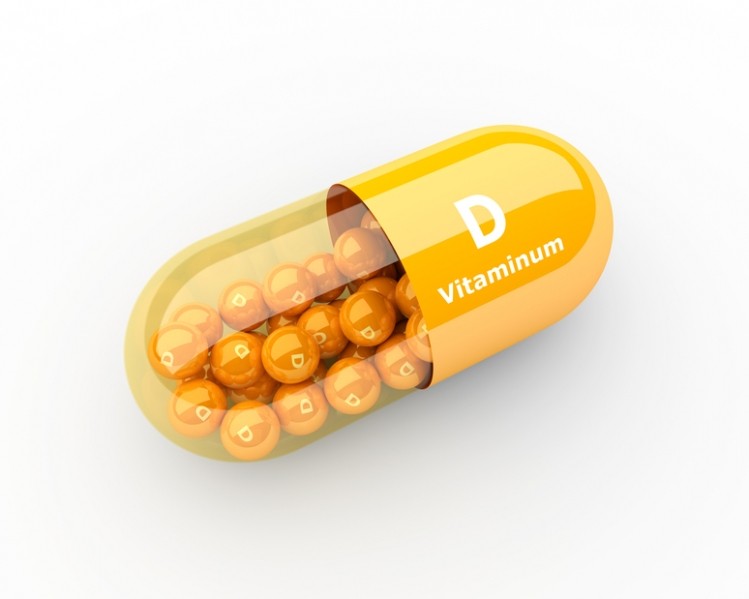Cannabis has taken center stage in the world of health and wellness. But within this complex plant lies a fascinating group of chemicals called cannabinoids. These natural compounds, including the well-known THC and CBD, hold immense potential for treating various medical conditions.
This article delves into the world of cannabinoids, exploring their origins, potential benefits, and the current state of research.
Beyond the Plant: Unveiling Cannabinoids
The term “cannabis” encompasses various products derived from the Cannabis sativa plant, which boasts over 500 unique chemical compounds. Two main types of cannabis exist – indica and sativa – each with potentially distinct properties.
However, the stars of the show are cannabinoids. These naturally occurring chemicals interact with our body’s endocannabinoid system, a network of receptors that play a crucial role in regulating various functions. Interestingly, our bodies even produce their own cannabinoids, known as endocannabinoids!
Potential Benefits: Where Cannabinoids Shine
Cannabinoids have emerged as promising tools for managing symptoms associated with a range of conditions. Research suggests they may be helpful in alleviating pain, particularly neuropathic pain, rheumatoid arthritis, and chronic pain. Additionally, they show potential in treating epilepsy and mitigating the side effects of cancer treatment.
The Road Ahead: Exploring the Future of Cannabinoid Therapy
While the initial research on cannabinoids is encouraging, further studies are crucial to fully understand their effectiveness and appropriate use in various therapies. This ongoing research will help establish clear guidelines for integrating cannabinoids into traditional medicine.
By delving deeper into the world of cannabinoids, we unlock the potential for innovative and effective treatments, paving the way for a more holistic approach to healthcare.
What are Cannabinoids: Nature’s Chemical Messengers within Cannabis
Cannabis has been used for centuries for both medicinal and recreational purposes. But what exactly makes this plant tick? The answer lies in a fascinating group of chemicals called cannabinoids.
Unlocking the Power of Cannabinoids
Imagine cannabinoids as tiny messengers within the cannabis plant. These naturally occurring chemical compounds interact with our body’s endocannabinoid system (ECS). This complex network of receptors acts like a communication hub, influencing functions like mood, memory, appetite, and pain perception. Interestingly, our bodies even produce their own cannabinoids, further highlighting the potential for these natural chemicals.
A Spectrum of Effects: THC, CBD, and Beyond
The world of cannabinoids is vast, but two main players stand out: THC and CBD.
- THC (Tetrahydrocannabinol): This is the cannabinoid responsible for the psychoactive effects, often associated with a “high” feeling, commonly linked to cannabis use.
- CBD (Cannabidiol): Unlike THC, CBD is not psychoactive. It’s gaining significant attention for its potential therapeutic benefits, ranging from pain relief to managing anxiety.
There’s also CBN (Cannabinol), a lesser-known cannabinoid with ongoing research into its therapeutic potential. Researchers are actively exploring the effects of other cannabinoids, aiming to unlock their unique contributions to health and wellness.
Medical Applications: A Glimpse into the Future
Cannabinoids hold immense promise for managing various medical conditions. Studies suggest they may be helpful in alleviating pain, particularly neuropathic pain, rheumatoid arthritis, and chronic pain. Additionally, they show potential in treating epilepsy and mitigating the side effects of cancer treatment.
It’s important to note:
- The FDA (Food and Drug Administration) has not approved the cannabis plant itself for medical use.
- However, several FDA-approved medications are derived from cannabinoids, such as Epidiolex (a purified CBD medication for specific types of seizures).
Beyond the Hype: Navigating the Research Landscape
While the initial research on cannabinoids is encouraging, further studies are crucial. We need a deeper understanding of their effectiveness and appropriate use in various therapies. This ongoing research will pave the way for the responsible integration of cannabinoids into traditional medicine.
Cannabinoids vs. Marijuana: Understanding the Difference
Although closely related, cannabinoids and marijuana are distinct. Cannabinoids are the individual chemical compounds found within the cannabis plant, including THC and CBD. Marijuana, on the other hand, refers to the dried leaves, flowers, stems, and seeds of the plant, containing cannabinoids as its active ingredients. Notably, marijuana often contains high levels of THC, contributing to its psychoactive effects.
By delving deeper into the world of cannabinoids, we unlock the potential for innovative and effective treatments, fostering a more holistic approach to healthcare.
How does Cannabinoid Works : Orchestrating Wellness Through the Body’s Internal Network
Cannabinoids, the chemical messengers within cannabis, don’t work in isolation. They interact with a fascinating system in our body called the endocannabinoid system (ECS). This network of receptors acts like a communication hub, spread throughout the brain, nervous system, and even other tissues.
The Endocannabinoid System: Your Body’s Cannabinoid Command Center
Imagine the ECS as a sophisticated intercom system. Our bodies naturally produce cannabinoid-like molecules called endocannabinoids. These endocannabinoids bind to receptors (CB1 and CB2) in the ECS, sending signals that influence various functions like mood, memory, pain perception, and immune response.
How Consumed Cannabinoids Join the Conversation
When we consume cannabinoids from cannabis, they can also interact with these same CB1 and CB2 receptors. However, unlike our body’s natural endocannabinoids, different cannabinoids have varying effects depending on:
- The specific cannabinoid: THC, for example, binds more readily to CB1 receptors, influencing mood and potentially causing a “high” feeling. CBD, on the other hand, interacts with both CB1 and CB2 receptors, potentially offering pain relief and other therapeutic effects without the psychoactive properties.
- The concentration of cannabinoids: The amount of a specific cannabinoid consumed can influence the intensity and type of effect it produces.
A Symphony of Effects: Pain Relief, Relaxation, and Beyond
By interacting with the ECS, cannabinoids can produce a wide range of effects, including:
- Pain relief: Cannabinoids may help manage pain by modulating signals in the nervous system.
- Relaxation and sleep: Some cannabinoids can promote feelings of relaxation and drowsiness.
- Appetite stimulation: Certain cannabinoids might stimulate appetite, potentially beneficial for some medical conditions.
- Mood changes: Cannabinoids can influence mood, potentially helping with anxiety or depression in some cases.
Understanding how cannabinoids interact with the ECS is crucial. This knowledge unlocks the potential for targeted therapeutic applications while ensuring safe and effective use of these fascinating natural compounds.
Unveiling the Potential: How Cannabinoids Are Used Today
Cannabinoids are generating significant interest for their potential therapeutic applications. Here’s a glimpse into how they’re currently being used and studied:
- Chronic Pain Management: Many people utilize cannabinoids to manage chronic pain. Research suggests they may be helpful in alleviating pain associated with conditions like arthritis, neuropathy, and chronic pain syndromes.
- Addressing Mental Health Concerns: Cannabinoids are being explored for their potential role in managing mental health conditions like anxiety and depression. While initial research shows promise, more studies are needed to solidify their efficacy.
Looking to the Future: Exploring Cannabinoid Applications
The potential uses of cannabinoids extend beyond the examples mentioned above. Researchers are actively investigating their effectiveness in treating various conditions, including:
- Epilepsy: Studies suggest cannabinoids may help control seizures in some epilepsy patients. Epidiolex, a CBD medication, is already FDA-approved for specific seizure types.
- Cancer Treatment Side Effects: Cannabinoids might offer relief from nausea, vomiting, and pain associated with cancer treatment.
A Word of Caution: Importance of Medical Supervision
Cannabinoids hold immense promise, but it’s crucial to approach them with caution. Until more research is available, it’s essential to use cannabinoids only under the guidance of a qualified healthcare professional. This ensures proper dosage, minimizes the risk of complications, and maximizes the potential benefits for your specific needs.
Cannabinoids: Balancing Benefits with Potential Risks
Cannabinoids offer exciting possibilities for therapeutic use, but it’s important to be aware of their potential downsides. While generally well-tolerated, some side effects and safety considerations require attention.
Understanding Side Effects:
- THC vs. CBD: The effects vary depending on the cannabinoid. THC, the psychoactive compound in cannabis, commonly causes dizziness, fatigue, and memory impairment. CBD, on the other hand, may help mitigate some of THC’s negative effects like anxiety or memory issues.
- Dose Matters: The severity of side effects often correlates with the dose. Higher doses of cannabinoids increase the likelihood of experiencing side effects.
Common Side Effects:
- THC: Dizziness, drowsiness, dry mouth, nausea, euphoria, confusion, balance problems.
- CBD: Diarrhea, drowsiness, fever, decreased appetite, vomiting, upper respiratory infection, elevated liver enzymes.
Important Safety Considerations:
- Inhalation vs. Ingestion: Smoking or inhaling cannabinoids exposes you to potentially harmful substances. Opting for oral consumption is generally safer.
- Drug Interactions: Cannabinoids can interact with various medications, potentially affecting their efficacy or causing adverse reactions. Common medications to watch out for include anticholinergics, benzodiazepines, opioids, some cancer treatments, and nicotine. Alcohol use with cannabinoids should also be avoided.
- Importance of Medical Supervision: Consulting a healthcare professional before using cannabinoids is crucial. They can assess potential drug interactions, determine the appropriate dosage for your needs, and minimize the risk of complications.
Cannabinoids hold promise for therapeutic applications, but a cautious approach is essential. By understanding the potential side effects, drug interactions, and the importance of medical guidance, you can navigate the use of cannabinoids more safely and effectively.
What Are Synthetic Cannabinoids?
Synthetic cannabinoids, often called “designer drugs,” are lab-created compounds that mimic the effects of natural cannabinoids found in the cannabis plant. While some synthetic cannabinoids have legitimate medical applications, others pose serious health risks due to their unregulated nature.
Understanding the Difference:
Natural cannabinoids, like THC and CBD, are present within the cannabis plant itself. Synthetic cannabinoids, on the other hand, are manufactured in labs. Some legal synthetic cannabinoids, like dronabinol (marketed as Marinol and Syndros), are used for medical purposes under controlled settings.
The Dark Side of Synthetic Cannabinoids:
The real danger lies in the illegal production and distribution of unregulated synthetic cannabinoids. These unregulated substances can be highly potent and unpredictable, leading to severe health consequences, including:
- Severe side effects: Unlike medical-grade cannabinoids, unregulated synthetic versions can cause intense side effects like hallucinations, seizures, violent behavior, and even death.
- Long-term health complications: The unknown chemical makeup of these unregulated substances can lead to long-term health problems that we may not yet fully understand.
Synthetic cannabinoids offer a cautionary tale. While some have legitimate medical uses, unregulated versions pose a significant threat to your health. By understanding the difference and prioritizing medical supervision, you can make informed decisions about cannabinoid use.
Who Shouldn’t Use Cannabinoids: Weighing the Benefits for Different People
Cannabinoids offer potential therapeutic benefits, but it’s important to understand who might need to proceed with caution. Here are some groups who should consult a healthcare professional before using cannabinoids:
- Young Adults (Under 25): The developing brain may be more susceptible to potential negative effects of cannabinoids. A doctor can help navigate potential risks and benefits.
- People with Liver Disease: Cannabinoids are processed by the liver. If you have liver disease, like Hepatitis C, your doctor can assess if cannabinoids are safe and recommend appropriate dosages.
- Pregnant and Breastfeeding Women: The effects of cannabinoids on a developing fetus or breastfed infant are still being researched. It’s best to avoid cannabinoids during pregnancy and breastfeeding until more information is available.
- Individuals with a History of Psychosis or Schizophrenia: There’s a potential link between cannabinoids and psychosis in some individuals, especially those with a family history. A doctor can assess your individual risk and guide you accordingly.
- People with a History of Substance Abuse: Cannabinoids may interact with other substances or trigger cravings in those struggling with addiction. Discuss your history with a doctor to determine if cannabinoids are suitable.
A Word on Risk and Benefit:
The health risks and benefits of cannabinoids can vary depending on the individual and their specific condition. In some cases, the potential benefits of cannabinoids might outweigh the risks.
Navigating the Legal Landscape of Cannabinoids: A State-by-State Maze
The legal status of cannabinoids, particularly THC and CBD, can feel like a complex maze. Here’s a breakdown to help you navigate:
Federal vs. State Laws:
- Federally: Under federal law, cannabinoids, including THC and CBD, are still classified as Schedule I drugs, meaning they have a high potential for abuse and no currently accepted medical use. However, individual states have enacted their own laws regarding cannabinoids.
- State Laws: Laws and regulations surrounding cannabinoids vary greatly across the US. Some states have legalized recreational use, while others permit medical use only. Still others have stricter regulations.
Research Protocols:
Researchers interested in studying cannabinoids must follow strict protocols set by the FDA. They need to submit proper applications and documentation to ensure responsible research practices.
Hemp vs. Cannabis:
The legal status of CBD can depend on its source. CBD derived from hemp (a cannabis plant with low THC levels) might be legal in some states, while CBD derived from cannabis plants (with higher THC content) might face stricter regulations.
A Word of Caution:
Regardless of the source (hemp or cannabis), products containing THC or CBD cannot be legally sold as dietary supplements in the US.
Staying Informed:
With laws constantly evolving, it’s crucial to stay updated on the legal status of cannabinoids in your state and any places you might travel to. Check reliable government websites or consult a healthcare professional for the latest information.
Remember: This information is for general knowledge only and does not constitute legal advice.
A Quick Recap
Cannabis has taken center stage in the world of health and wellness, and within this plant lies a treasure trove of chemical compounds called cannabinoids. These natural molecules, including the well-known THC and CBD, hold immense potential for influencing various bodily functions.
The Cannabinoid Orchestra: Regulating Body and Mind
There are hundreds of cannabinoids found in the cannabis sativa plant, each with unique properties. However, THC and CBD stand out as the most prominent players.
- THC (Tetrahydrocannabinol): This is the cannabinoid responsible for the psychoactive effects, often associated with the “high” feeling commonly linked to cannabis use.
- CBD (Cannabidiol): Unlike THC, CBD is not psychoactive. It’s gaining significant attention for its potential therapeutic benefits, ranging from pain relief to managing anxiety.
Cannabinoids interact with our endocannabinoid system, a network of receptors that influence functions like mood, memory, appetite, and pain perception.
A Maze of Laws: Navigating the Legal Status of Cannabinoids
The legal landscape surrounding cannabinoids can be confusing. While federally classified as a Schedule I drug (high potential for abuse, no accepted medical use), individual states have enacted their own laws.
- State-by-State Variations: Some states have legalized recreational use, while others permit medical use only, and some have stricter regulations.
- FDA-Approved Cannabinoid Medications: Despite the complex legal landscape, there are a few FDA-approved medications containing cannabinoids, highlighting their potential therapeutic impact.
The Road Ahead: Research and Responsible Use
The legal status of cannabinoids is constantly evolving as research uncovers their potential and regulations adapt. Understanding cannabinoids and their effects is crucial for navigating the complex world of cannabis-based therapies and supplements.
Consulting Your Healthcare Guide:
Before considering cannabinoid-based treatments, discuss the risks and benefits with your healthcare provider. They can assess your individual needs and determine if this approach might be a suitable option for you.
By delving deeper into the fascinating world of cannabinoids, we can unlock the potential for innovative and effective treatments, fostering a more holistic approach to healthcare.




